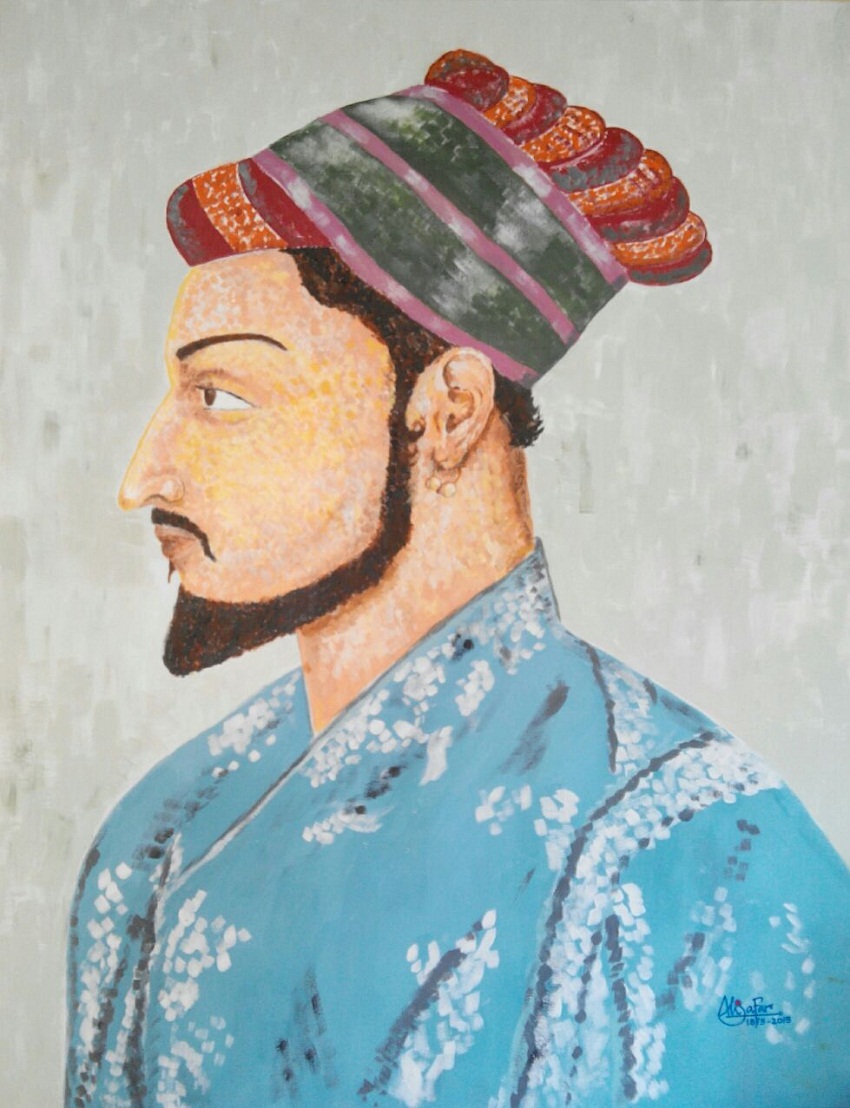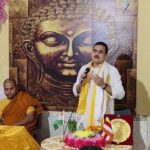DARA SHIKOH, A POWERFUL SYMBOL
- By : Anirban Ganguly
- Category : Articles

The renaming of Aurangzeb Road is a tribute to the syncretism that Dara Shikoh symbolised and the path that he perhaps aspired to chalk out, when destiny cruelly snuffed him out. Abdul Kalam, signified, a Dara Shikoh of our times, an example to be emulated and celebrated
An interesting document in the study of medieval India is the multi-volume series The History of India as told by its Own Historians edited by Henry Miers Elliot and John Dowson. Counterfeit liberals and the usual phony Marxists have of course issues with it — they argue that the series, paints the Mughal period and in it especially some phases as oppressive to Hindus and, therefore, they have through a concerted effort, ensured that these are usually never referred to or at best, dismissed as flawed history.
It is these phony and counterfeit intellectuals who are now shedding tears over the renaming of Aurangzeb Road — behaving as if their favourite rendezvous spot in the heart of the national capital was razed to the ground. Interestingly, it is these intellectuals, who are now finding great merit in Aurangzeb’s persona and rule, who had opposed the APJ Abdul Kalam’s election as President of the Indian Republic and found his career to be at best mediocre.
They also squirmed at and opposed the demand made to name a road after Dara Shikoh — a syncretic symbol of civilisational assimilation and cooperation who was beheaded by Aurangzeb. Strangely, while instructing Prime Minister Narendra Modi for years, on the need for being tolerant towards the minorities, these groups have always upheld as their mascot, those very elements — past or present — that have represented extreme reaction, suppression and intolerance. Their mourning, therefore, on the demise of Aurangzeb Road is more an expression of their anguish at losing a valuable mascot in their fight to preserve and perpetuate intolerance and divisive tendencies in the Indian society and to continuously castigate and hector Hindus into submission, imbued with a feeling of an epochal guilt. They are past masters at reversing the contours and at creating a false narrative.
It is interesting to look at some descriptions from this history of India series. On Dara Shikoh and his inclination for religious dialogue and spiritual quest, the court historians of Aurangzeb record that Dara:
In his later days did not restrain himself to the free-thinking and heretical notions which he had adopted under the name of tasawwuf (Sufiism), but showed an inclination for the religion and institutions of the Hindús. He was constantly in the society of bráhmans, jogís and sannyásís, and he used to regard these worthless teachers of delusions as learned and true masters of wisdom. He considered their books which they call Bed (Veda) as being the word of god, and revealed from heaven, and he called them ancient and excellent books. He was under such delusion about this Bed (Veda), that he collected bráhmans and sannyásís from all parts of the country, and paying them great respect and attention, he employed them in translating the Bed (Veda). He spent all his time in this unholy work, and devoted all his attention to the contents of these wretched books. Instead of the sacred name of god, he adopted the Hindú name prabhu (lord), which the Hindús consider holy, and he had this name engraved in Hindí letters upon rings of diamond, ruby, emerald, etc. Through these perverted opinions he had given up the prayers, fasting and other obligations imposed by the law.
Apart from the lust for the throne that drove Aurangzeb, it must have also become clear to the Alamgir that Dara had been allowed to ascend the throne in the normal course of events, the “foundations of the faith would be in danger and the precepts of Islam would be changed.” In records of Aurangzeb’s period, Dara Shikoh is repeatedly called ‘Be-Shikoh’ or ‘the undignified.’
Aurangzeb’s reign is replete with examples of how he pushed for a systematic interference, prohibition and ultimate destruction of the systems and manners of the vast majority — systems and manners which till then, were still largely allowed to survive and perpetuate without major hindrance. It was Aurangzeb who brought in a clear barrier and marked a watershed announcing a period which would see the accentuation of this sense of difference.
Had Dara Shikoh, who had evolved to a great degree in his persona and belief a deeper insight and understanding of the Bharatiya ethos and had actively engaged in trying to evolve an active empathy with and understanding of the foundational roots of Indian civilisation, triumphed, the sub-continental story would have perhaps been a different one.
KR Malkani, one of the early ideological anchors of the post-independence nationalist political formation, the Bharatiya Jana Sangh and later the BJP, had in fact, argued for a road in Delhi to be named after Dara Shikoh replacing Aurangzeb “the most divisive emperor of India.” Malkani saw in Dara “the finest example of national unity and integrity.”
To many, Dara was and continues to remain, the archetype of one who had recognised, internalised, explored and had come to peace with the astonishing diversities of India, a diversity that celebrated itself, rejoiced and amalgamated into a larger living synthesis — creating a living organism that was diverse and one at the same time.
Aurangzeb, as per his own historians, embodied and manifested a spirit that hacked away and destroyed this syncretic aspiration:
On the 17th Zí-l ka’da, 1079 (18th April, 1669), it reached the ear of His Majesty, the protector of the faith, that in the provinces of Thatta, Multán, and Benares, but especially in the latter, foolish bráhmans were in the habit of expounding frivolous books in their schools, and that students and learners, musulmáns as well as Hindús, went there, even from long distances, led by a desire to become acquainted with the wicked sciences they taught.
The ‘director of the faith’ consequently issued orders to all the Governors of provinces to destroy with a willing hand the schools and temples of the infidels; and they were strictly enjoined to put an entire stop to the teaching and practising of idolatrous forms of worship.
On the 15th Rabí’u-l ákhir it was reported to his religious Majesty, leader of the unitarians, that, in obedience to order, the Government officers had destroyed the temple of Bishnáth at Benares.
The temple at ‘Mattra’ — Mathura which once saw the munificence of Jahangir was similarly ordered to be destroyed by Aurangzeb the “justice loving monarch, the constant enemy of tyrants.” Here is how it was done:
In the month of Ramazán, 1080 AH (December, 1669), in the 13th year of the reign, this justice-loving monarch, the constant enemy of tyrants, commanded the destruction of the Hindú temple of Mathura or Mattra, known by the name of Dehra Késú Ráí, and soon that stronghold of falsehood was levelled with the ground.
On the same spot was laid, at great expense, the foundation of a vast mosque…The richly-jewelled idols taken from the pagan temples were transferred to Ágra, and there placed beneath the steps leading to the Nawáb Begam Sáhib’s mosque, in order that they might ever be pressed under foot by the true believers.
The renaming of Aurangzeb Road thus is essentially a tribute to the syncretism that Dara symbolised and the path that he perhaps aspired to chalk out when destiny cruelly snuffed him out. APJ Abdul Kalam, in fact, signified, a Dara Shikoh of our times, an example to be emulated and celebrated.
Those who oppose such a move or shed false tears over it never had India’s civilisational interest or well-being at heart; they have always thrived by generating a false sense of victimhood, of clash, conflict and hate, it keeps them relevant only to themselves.

















